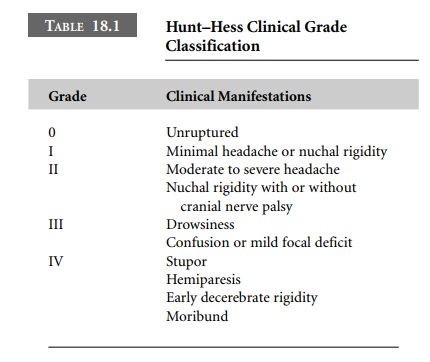Chapter: Clinical Cases in Anesthesia : Intracranial Aneurysms
How are patients graded following subarachnoid hemorrhage from a ruptured aneurysm?
How are
patients graded following subarachnoid hemorrhage from a ruptured aneurysm?
The incidence of subarachnoid hemorrhage is
about 10–15 per 100,000 person-years. Angiography shows an intracranial
aneurysm as the cause of subarachnoid hemorrhage in 80–85% of patients.
Cerebral aneurysms are most often found at bifurcations near the circle of
Willis, and the risk of rupture is increased with increasing size. Subarachnoid
hemorrhage almost always presents with rapid onset of severe headache. The
presence of other signs and symptoms is used to clinically grade these
patients. The Hunt–Hess Clinical Grade classification is most widely used
(Table 18.1).

Related Topics